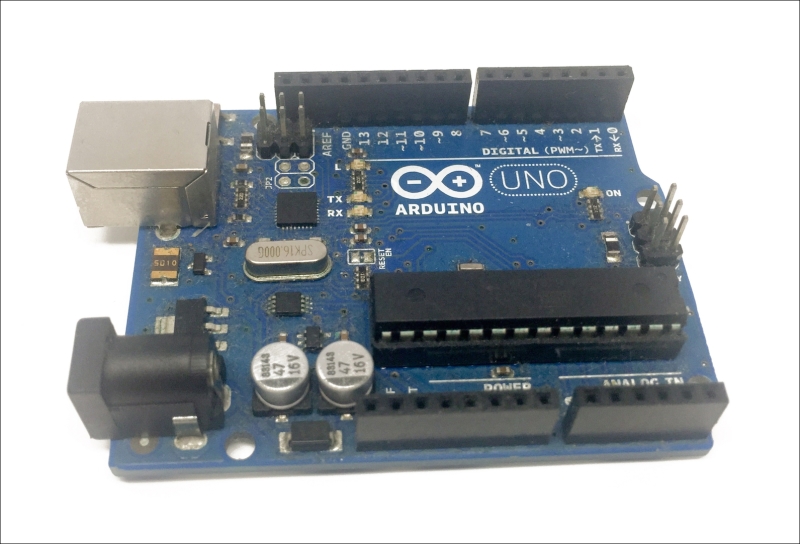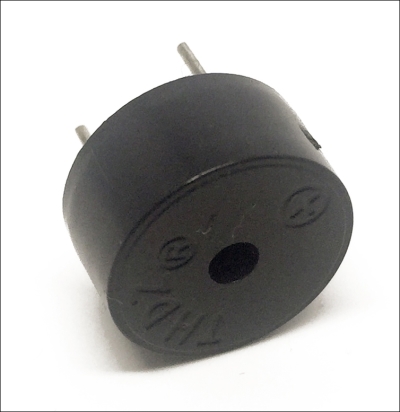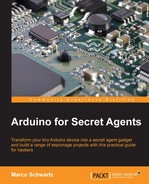I want to start this book with a simple project that any secret agent will want to have, a simple alarm system that will be activated whenever motion is detected by a sensor. This simple system is not only fun to make but will also help us to go over the basics of Arduino programming and electronics, which are the skills that we will use in this whole book.
It will basically be a simple alarm (a buzzer that makes sound, plus a red LED) combined with a motion detector. The user will also be able to stop the alarm by pressing a button.
We are going to do the following in this chapter:
- First, we are going to see what the requirements for this project are, in terms of hardware and software
- Then, we will see how to assemble the hardware parts for this project
- After that, we will configure our system using the Arduino IDE
First, let's see what the required components for this project are. As this is the first chapter of the book, we will spend a bit more time here to detail the different components, as these are components that we will be using in the whole book.
The first component that will be central to the project is the Arduino Uno board:

In several chapters of this book, this will be the 'brain' of the projects that we will make. In all the projects, I will be using the official Arduino Uno R3 board. However, you can use an equivalent board from another brand or another Arduino board, such as an Arduino Mega board.
Another crucial component of our alarm system will be the buzzer:

This is a very simple component that is used to make simple sounds with Arduino. You couldn't play an MP3 with it but it's just fine for an alarm system. You can, of course, use any buzzer that is available; the goal is to just make a sound.
After that, we are going to need a motion detector:

Here, I used a very simple PIR motion detector. This sensor will measure the infrared (IR) light that is emitted by moving objects in its field of view, for example, people moving around. It is really easy and quite cheap to interface with Arduino. You can use any brand that you want for this sensor; it just needs a voltage level of 5V in order to be compatible with the Arduino Uno board.
Finally, here is the list of all the components that we will use in this project:
- Arduino Uno (https://www.sparkfun.com/products/11021)
- Buzzer (https://www.sparkfun.com/products/7950)
- PIR (https://www.sparkfun.com/products/13285)
- LED (https://www.sparkfun.com/products/9590)
- 330 Ohm resistor (https://www.sparkfun.com/products/8377)
- Button (https://www.sparkfun.com/products/97)
- 1k Ohm resistor (https://www.sparkfun.com/products/8980)
- Breadboard (https://www.sparkfun.com/products/12002)
- Jumper wires (https://www.sparkfun.com/products/8431)
On the software side, the only thing that we will need in the first chapter is the latest version of the Arduino IDE that you can download from the following URL: https://www.arduino.cc/en/main/software.
Note that we are going to use the Arduino IDE in all the projects of this book, so make sure to install the latest version.
